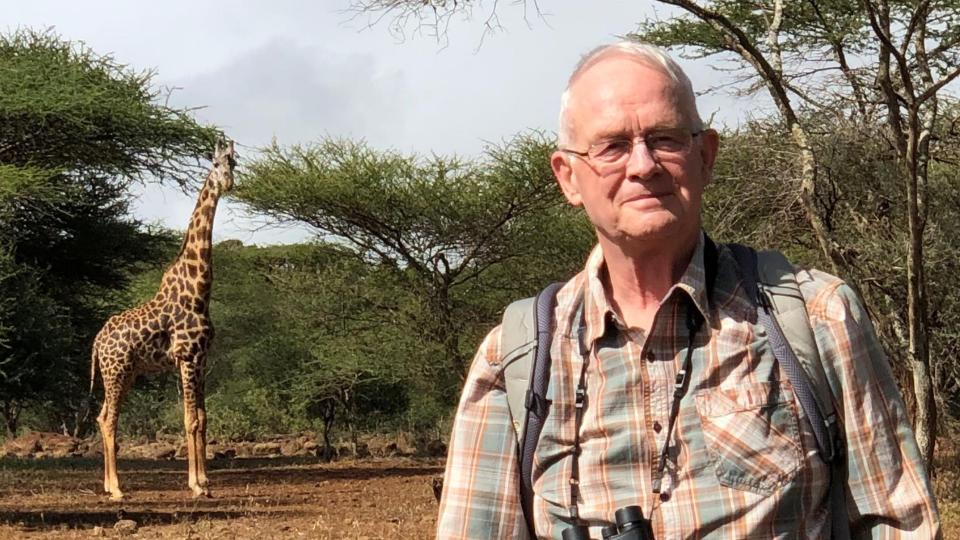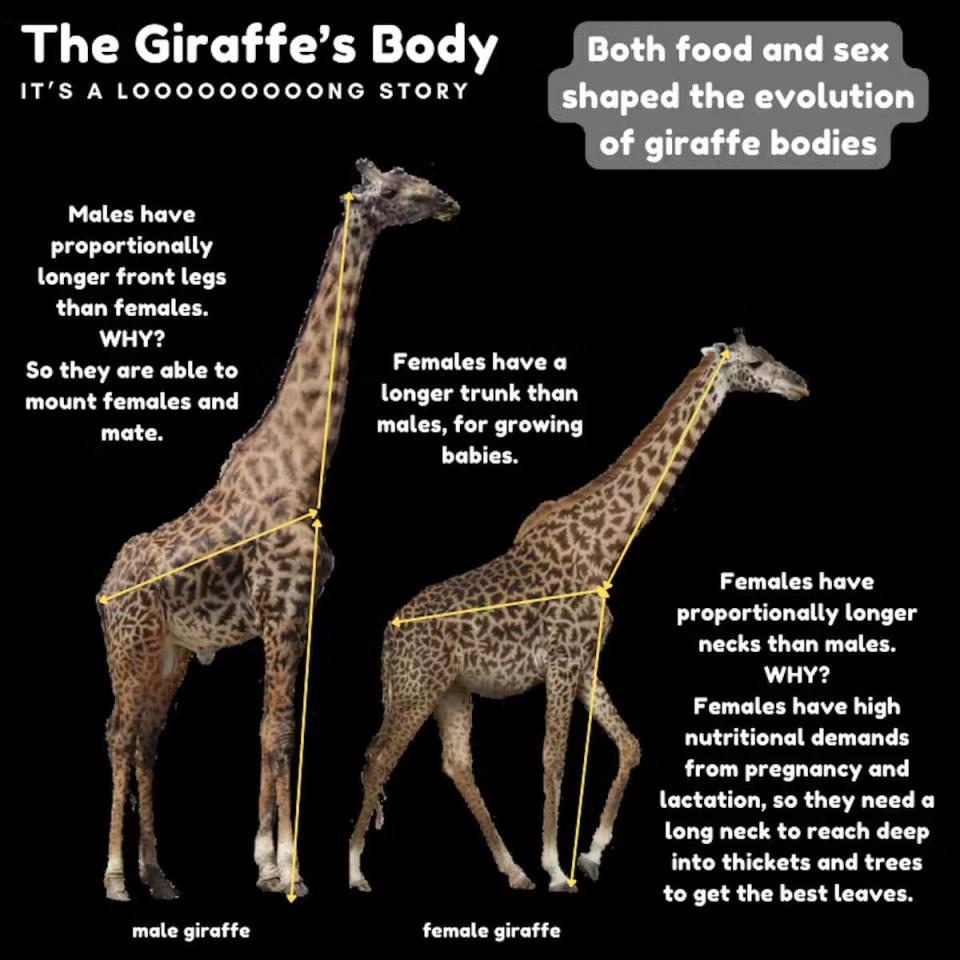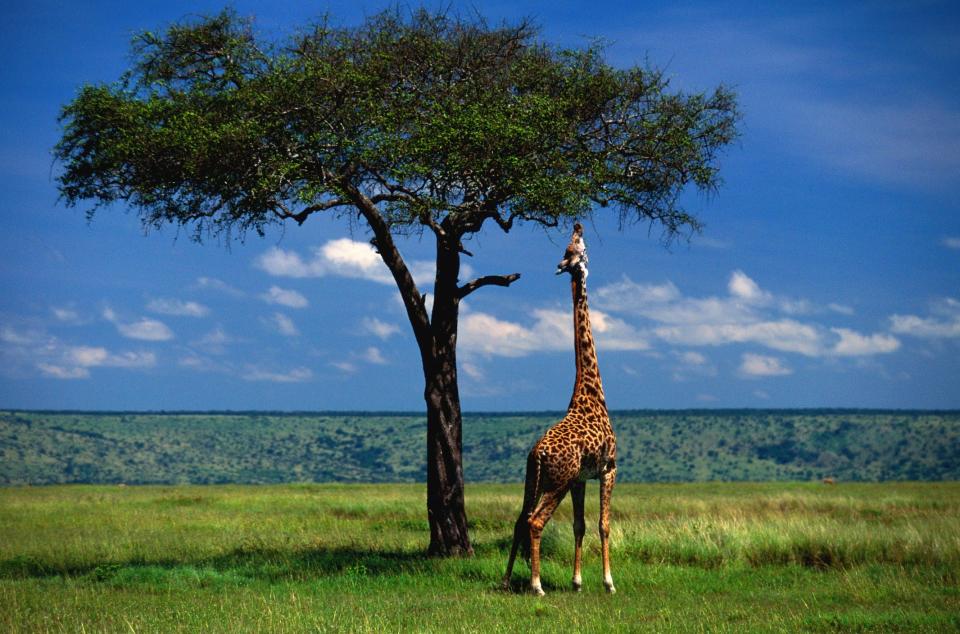-
Giraffes have the longest necks of any living animal but scientists can’t agree on why.
-
Scientists largely agree that men drove the evolution of long necks to compete for mates.
-
But new research suggests the opposite, challenging the leading theory of “sexual necks”.
Giraffes didn’t always look like the majestic giants we recognize – ancient giraffes looked like deer. But something happened in the last millennium that caused giraffes to develop the longest necks of any living animal.
What that driver was, however, has been the subject of a 150-year debate among evolutionary biologists.
In the 19th century, Charles Darwin and Jean Baptiste Lamarck suggested that giraffes developed long necks to help them grab leaves from trees. A later theory usurped that of Darwin and Lamarck, suggesting that male giraffes evolved long necks to fight and compete for female mates. This “neck to sex” idea has been the leading theory since the late 90’s. But that may soon change.
A recent study published in the peer-reviewed journal Mammalian Biology provides new clues to the debate that may prove that Darwin and Lamarck may have been at least partially right all along.
Size doesn’t always matter

Male giraffes have longer necks than females. As a result, biologists have speculated that men drove the evolution of this physical feature.
The lead author of the new study, Douglas Cavener, was not entirely convinced. Yes, men have longer necks, but everything else about them is bigger, Cavener, who is a professor of biology at Penn State, told BI.
“I realized that the key question was, ‘Do men have longer necks relative to their rest of their bodies?'” Cavener said.
So he and his colleagues — including his wife and daughter, who are co-authors on the paper — began to investigate. They estimated neck length from photographs of mature Masai giraffes, a species of giraffe native to Tanzania and southern Kenya in East Africa.

They calculated the size in each photograph of the captive and wild giraffes to measure different body parts including the neck, legs and trunk. When they analyzed the numbers, Cavener and his colleagues found that the men had decreased.
“What we found was very surprising, which is that women have longer necks than men, contrary to predictions,” Cavener said, adding that “it turns out that women also have proportionally longer trunks.”
“So that kind of turned things upside down,” Cavener said.
Why do giraffes have long necks?
A female giraffe gives birth approximately every two years. Gestation lasts about 15 months. So, that means they are either pregnant or lactating for most of their reproductive lives, Cavener said.
That takes a lot of energy. But female giraffes are good eaters, so they’ll “peek their necks into the bush to find” the best leaves, Cavener said.
Cavener said he thinks that because women need more energy and nutrition, this is what caused ancient giraffes to develop longer necks over the millennia.

“It goes back to Darwin and Lamarck’s theory that this was probably driven by competition for food rather than mating success. But the main thing is to put the emphasis on females rather than males,” Cavener added.
Cavener said this may be the first study to suggest that females, not males, are responsible for giraffes’ long necks. That’s important not only for understanding giraffe evolution but how male and female giraffes behave differently, which can help in conservation efforts.
“This study, for me, shows the importance of understanding the different behavioral strategies used by men and women in their survival skills,” and how those strategies can drive evolution in a long-lived species, Zoe Raw – a behavioral biologist with giraffes. an expert who was not involved in the research – told Business Insider via email.
Cavener’s research is part of a larger effort to help save the species. In 2015, the International Union for Conservation of Nature listed the Masai giraffe as critically endangered. Poaching and other human interference have reduced the population. Hunting of Masai giraffes is illegal in East Africa, but poachers still hunt them for their wild meat and purported health benefits in their bone marrow and brain.
While there’s usually some pushback whenever a new idea enters the conversation, Raw said the new research is compelling enough to challenge the leading “sexual neck” theory.
“Nothing can ‘prove’ what causes evolution, but in terms of developing a solid and realistic, evidence-based theory, I think this paper has nailed it,” Raw said.
Read the original article on Business Insider
#Scientists #finally #giraffes #necks #long